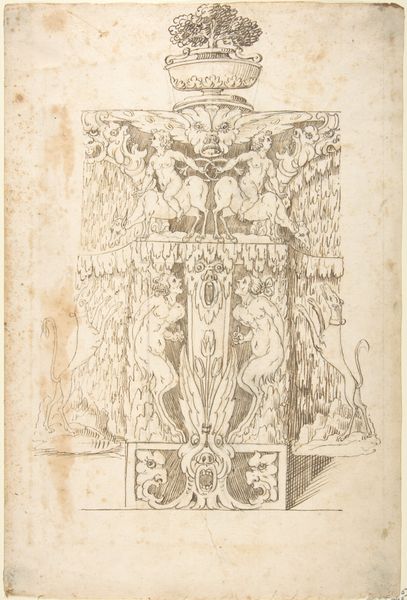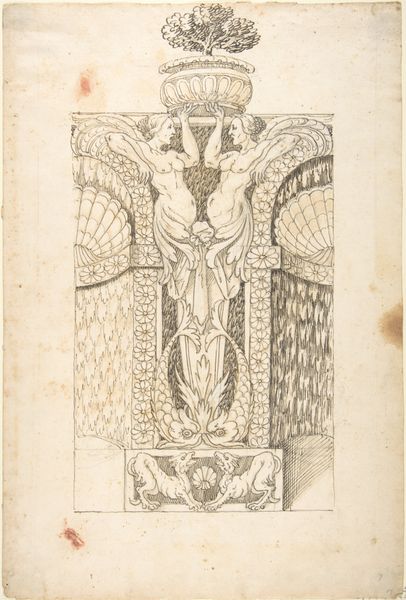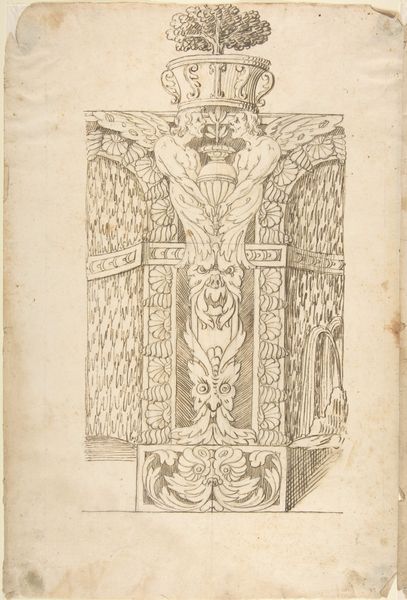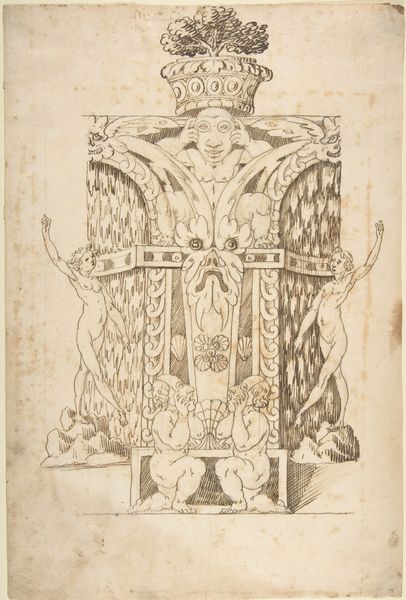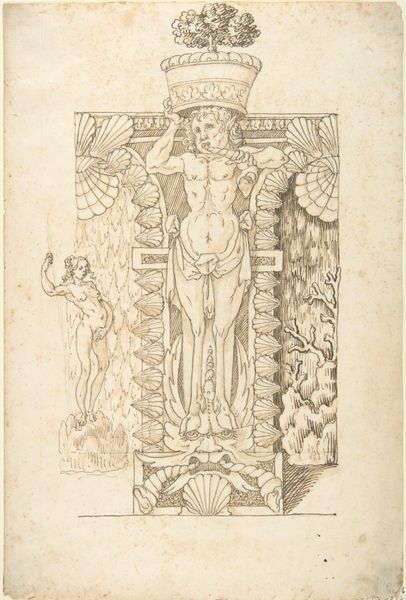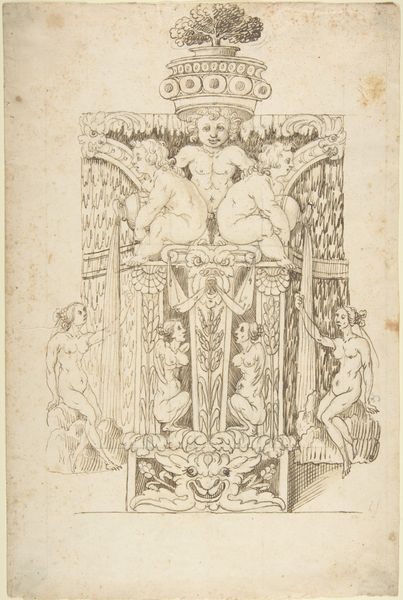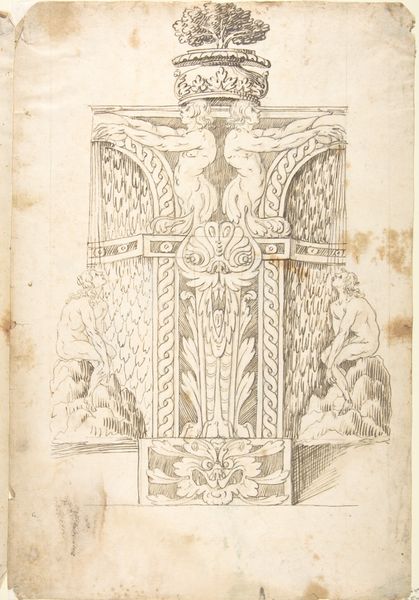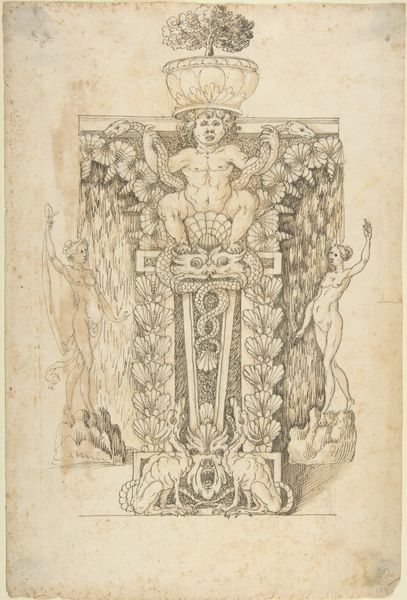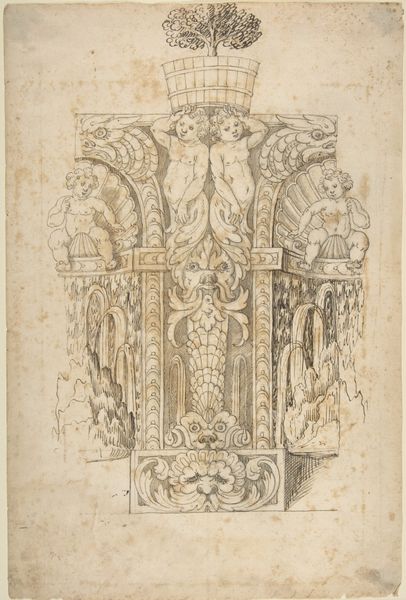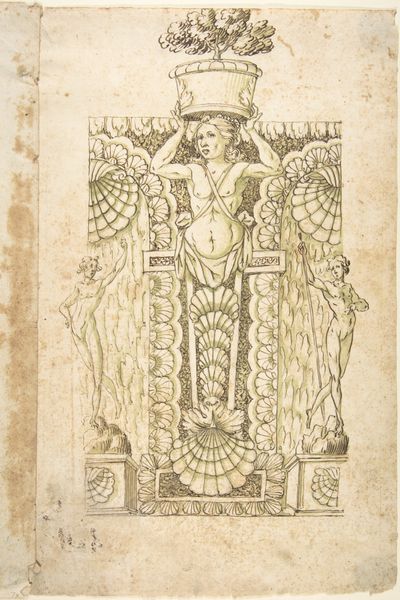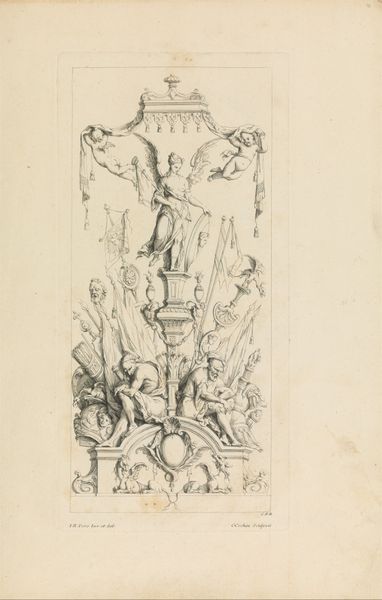
drawing, ink
#
drawing
#
figuration
#
11_renaissance
#
ink
#
history-painting
Dimensions: 14 11/16 x 9 7/8 in. (37.3 x 25.1 cm)
Copyright: Public Domain
Curator: What strikes you immediately about this design, Editor? Editor: It feels a bit melancholic, honestly. Despite the presence of figures and fountains, there's a stillness to the scene. The ink drawing has an unfinished quality, creating a rather pensive mood. Curator: Indeed. The "Design for a Wall Fountain" is attributed to an anonymous artist working sometime between 1550 and 1620. Executed in ink, it gives us a glimpse into the aesthetic preoccupations of the late Renaissance. We know it's currently part of the collection at the Metropolitan Museum of Art. Editor: It seems clear that the central male figure is carrying someone...or something? And who are these putti above, seemingly balancing an urn on their head? What could these relations signify? Curator: Well, one could interpret it as an exploration of power dynamics within Renaissance social structures. Consider the male figure as representative of labor, burdened yet still adorned. And the urn supported by the putti could symbolize a state ideal. I suspect contemporary viewers would perceive the visual hierarchy as totally normal. Editor: And what about these leonine masks spouting water, almost symmetrically opposed on either side? Do they simply stand in for a general masculine strength or is there something else going on here? They're interesting formal repetitions for an anonymous designer. Curator: Absolutely. Water was more than a functional element; fountains served as grand displays of wealth and authority. Furthermore, the choice of classical motifs such as masks, shells, and idealized bodies speaks to the aspirations of patrons to legitimize their reign through references to antiquity. It all echoes prevailing themes that resonated within aristocratic circles. Editor: Right, though I can't help thinking, the figure seems strangely positioned, as if crushed by all the elements above. The Renaissance may have looked to antiquity, but this work, deliberately or not, perhaps reflects some emerging tensions of its time. It isn’t entirely harmonious for me. Curator: A very important point to make. And an artwork such as this reminds us of the complexities that underpinned Renaissance society, expressed through designs meant to reinforce privilege, and ultimately making statements about our world today.
Comments
No comments
Be the first to comment and join the conversation on the ultimate creative platform.
